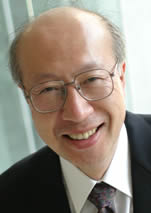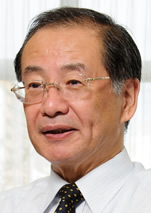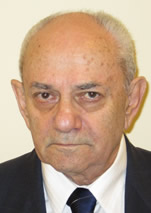2013 Recipients of C&C Prize

The recipients of the 2013 C&C Prize were selected as shown below.
Group A
>> Group A

Dr. Kazuro Kikuchi Professor, the University of Tokyo |

Dr. Masataka Nakazawa Distinguished Professor, Tohoku University |
Citation
For Pioneering and Leading Contributions to the Advancement of Coherent Optical Fiber Communications Systems
Achievement
Dense wavelength-division-multiplexed (DWDM) optical fiber transmission systems have been developed rapidly owing to the performance improvement of wideband erbium-doped fiber amplifiers (EDFA) and related technologies. As a result, a single-channel speed of 10 to 40 Gbps was achieved together with a total transmission capacity of up to the Tbps level. Although such systems were put into practical use in around 2000, the need for transmission capacity increments of about 40% a year pushed the development of new breakthrough technologies that can increase a single-channel speed up to 100 Gbps.
The most practical and desirable breakthrough technology was the multi-level digital coherent technology with quadrature phase shift keying (QPSK) and quadrature amplitude modulation (QAM).
The C&C Prize was awarded to Dr. Kikuchi and Dr. Nakazawa for their significant contributions to the fundamental development and realization of these new-generation breakthrough technologies.
Group B
>> Group B

Prof. Vladimir Vapnik
Professor, Columbia University;
Fellow, NEC Laboratories America, Inc.
Citation
For Contributions to Establishing Statistical Learning Theory and for the Invention of High-Performance and Practical Learning Algorithms
Achievement
In recent years, machine learning technology has become one of the significant fundamental technologies for the development of ICT (such as the realization of various Web-based services and social services, the expansion of the integration areas of ICT, and the utilization of Big Data).
Prof. Vapnik proposed a performance evaluation theory for learning models under Statistical Learning Theory (SLT) and a high-performance and practical learning model, Support Vector Machine (SVM), considered to be one of the best learning models in pattern recognition. The breakthroughs made by Prof. Vapnik were extremely significant, and he has made valuable contributions to the development of machine learning technology and the expansion of its application field.
The C&C Prize was awarded to Prof. Vapnik in recognition of the exceptional contributions his work makes to the development of today’s ICT field.
